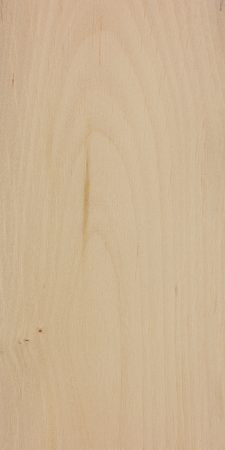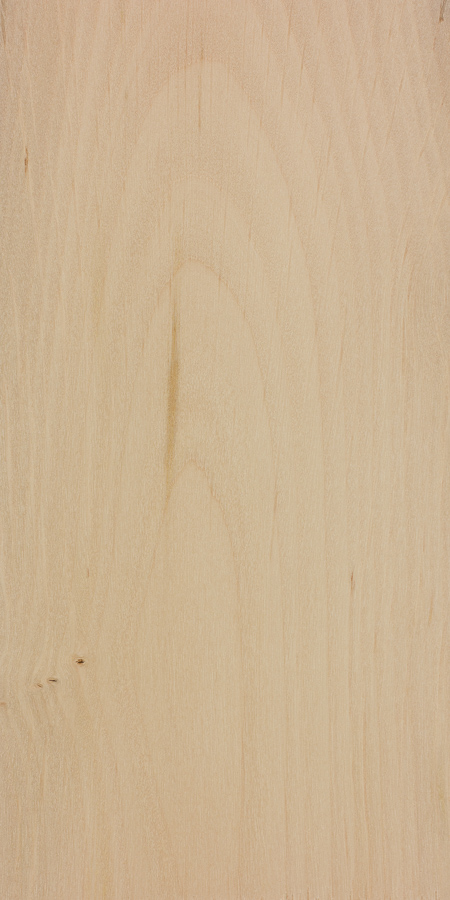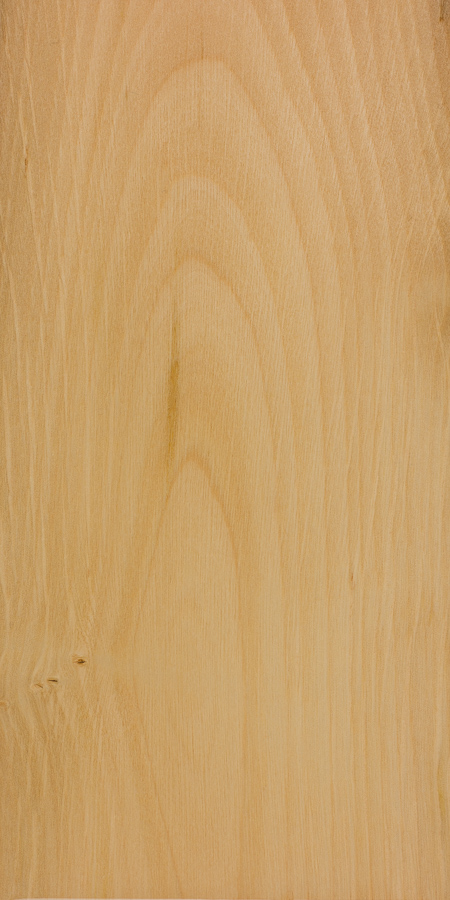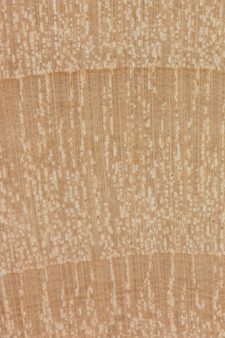DATA SOURCE(S): 36,40,44
Common Name(s): Hazelnut, common hazel
Scientific Name: Corylus avellana
Distribution: Europe and Western Asia
Tree Size: 20-35 ft (6-10 m) tall,
4-8 in (10-20 cm) trunk diameter
Average Dried Weight: 38.1 lbs/ft3 (610 kg/m3)
Specific Gravity (Basic, 12% MC): .52, .61
Janka Hardness: 1,090 lbf (4,850 N)*
*Estimated hardness based on specific gravity.
Modulus of Rupture: 15,660 lbf/in2 (108.0 MPa)
Elastic Modulus: 1,566,000 lbf/in2 (10.80 GPa)
Crushing Strength: 7,110 lbf/in2 (49.0 MPa)
Shrinkage: Radial: 4.9%, Tangential: 10.4%,
Volumetric: 15.5%, T/R Ratio: 2.1
Color/Appearance: White to light brown. It’s unclear whether hazel is composed almost entirely of pale sapwood, or if the heartwood is simply equally as pale and thus indistinguishable.
Grain/Texture: Fine even texture and a straight grain.
Rot Resistance: No data available. As the heartwood may not be distinguishable from the sapwood, it would be safest to assume hazelnut as perishable or non-durable in exterior applications.
Workability: Easy to work with both hand and machine tools. Turns, glues, and finishes well.
Odor: No characteristic odor.
Allergies/Toxicity: Although severe reactions are quite uncommon, hazelnut has been reported to cause skin irritation. See the articles Wood Allergies and Toxicity and Wood Dust Safety for more information.
Pricing/Availability: Hazelnut is generally only a shrub or small tree, and is not considered a commercial timber species. Small/narrow sections may sometimes be available from local harvesting on a limited basis.
Sustainability: This wood species is not listed in the CITES Appendices, and is reported by the IUCN as being a species of least concern.
Common Uses: Narrow coppiced sections are generally used in-the-round for baskets or fences.
Comments: Although hazelnut is much better known for its edible nuts, this species can sometimes also reach sizes that make it useable for lumber. One source remarks that hazel wood (C. colurna in particular) is “well grained and does not warp, and deserves to be better known…”[1]Gamble, J. S. (1881). A manual of Indian timbers: an account of the structure, growth, distribution, and qualities of Indian woods (p. 391). Office of the Superintendent of government printing.
Images: Drag the slider up/down to toggle between raw and finished wood.
Identification: See the article on Hardwood Anatomy for definitions of endgrain features.
Porosity: diffuse porous; growth rings usually discernible due to decrease in pore frequency in latewood
Arrangement: radial multiples of two to four (or more) pores arranged in radial or diagonal pattern
Vessels: small to medium, moderately numerous to numerous
Parenchyma: generally not visible even under magnification
Rays: narrow, close spacing; regular rays not visible without magnification, though aggregate rays occur intermittently (similar to alder) and are quite conspicuous
Lookalikes/Substitutes: Being in the Betulaceae (birch) family, hazelnut can be confused with other diffuse porous hardwoods in the this family. namely hornbeam, hophornbeam, alder, and birch.
Notes: None.
Related Content:
References[+]
| ↑1 | Gamble, J. S. (1881). A manual of Indian timbers: an account of the structure, growth, distribution, and qualities of Indian woods (p. 391). Office of the Superintendent of government printing. |
|---|










